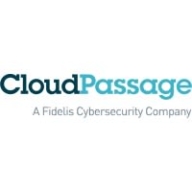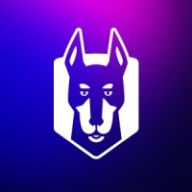

CloudPassage and Snyk are both security solutions that compete in the cloud environment category. Based on the data comparisons, CloudPassage seems to have the upper hand in compliance monitoring, while Snyk excels in integrating with DevOps.
Features: CloudPassage offers continuous compliance monitoring, dynamic asset inventory, and real-time security analytics capabilities. Snyk stands out with its integration into the development process, vulnerability identification, and DevOps compatibility.
Ease of Deployment and Customer Service: CloudPassage integrates smoothly with existing infrastructure and provides extensive customer support, ensuring quick deployment. Snyk offers seamless integration with CI/CD pipelines; however, its service model may lead to slower resolution times compared to CloudPassage.
Pricing and ROI: CloudPassage typically has a higher initial setup cost, but the ROI is often justified through enhanced security management. Snyk offers flexible pricing models that appeal to budget-conscious businesses while providing significant ROI by addressing vulnerabilities early in the software lifecycle.

CloudPassage Halo is an agile security and compliance platform that works in any cloud infrastructure: public, private or hybrid. The platform is unique because it provides continuous visibility and enforcement delivered as a service, so it’s on-demand, fast to deploy, fully automated and works at any scale.
The CloudPassage platform delivers a comprehensive set of security and compliance features, so you don’t have pay for and manage point solutions that often don’t integrate well with each other. Hundreds of companies use CloudPassage as a strategy to take full advantage of the business benefits of their cloud investments, with the confidence that critical business assets are protected. Using CloudPassage, security organizations achieve 6 critical control objectives with a platform that is flexible, fast and scalable:
Visibility: Immediate, consistent, continuous knowledge of what assets exist, where they reside, and what they’re doing.
Strong Access Control: Strong, layered controls enabling authorized access & denial of resources to unauthorized entities.
Vulnerability Management: Continuous detection & elimination of issues that create exploitable points of weakness.
Data Protection: Assurance that critical data is encrypted & used appropriately by authorized entities while in motion or at rest.
Compromise Management: Capabilities that enable detection & response to malicious or accidental compromise of resources.
Operational Automation: Day-to-day management of technologies & processes that ensure security & compliance.
Snyk's AI Trust Platform empowers developers to innovate securely in AI-driven environments, ensuring rapid and secure software development with enhanced policy governance.
Snyk’s platform integrates AI-ready engines across the software development lifecycle, offering broad coverage with high speed and accuracy essential for fast-paced coding environments. AI-driven features include visibility, prioritization, and tailored security policies that enable proactive threat prevention and quick remediation. By focusing on LLM engineering and AI code analysis, Snyk supports secure and productive development processes. The platform's partnerships, including GenAI code assistants, enhance AI application security by addressing new threats and code velocity challenges.
What are the key features of Snyk?Snyk is implemented across industries focusing on agile development and DevSecOps, enhancing software delivery speed and security. It is widely used for continuous monitoring and adherence to security and licensing standards, especially in environments relying on Docker image security and CI/CD pipeline integration.
We monitor all Cloud Security Posture Management (CSPM) reviews to prevent fraudulent reviews and keep review quality high. We do not post reviews by company employees or direct competitors. We validate each review for authenticity via cross-reference with LinkedIn, and personal follow-up with the reviewer when necessary.